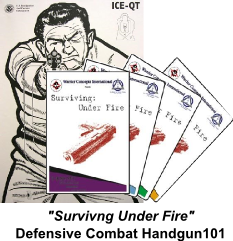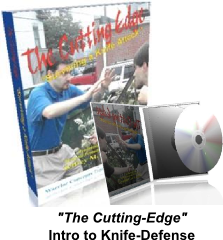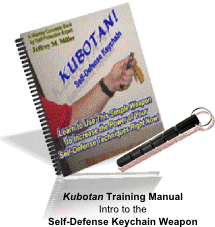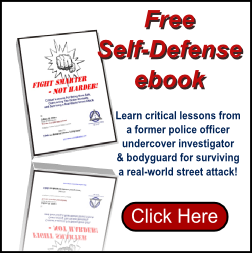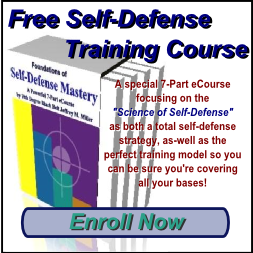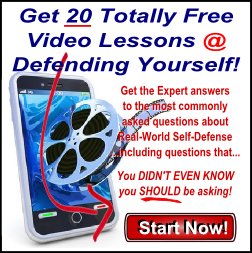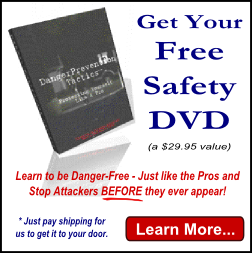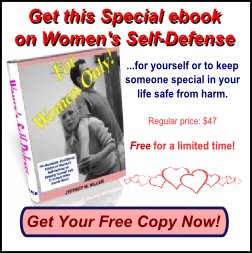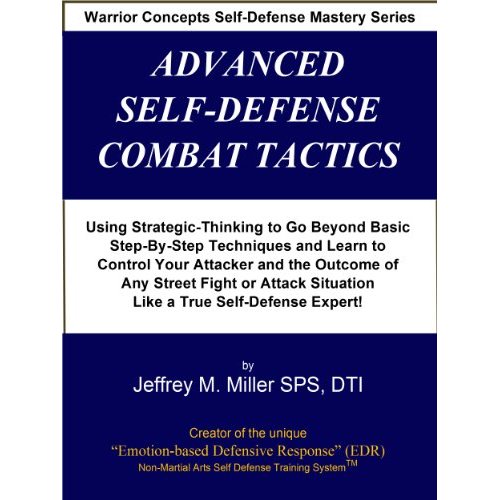|
Self-Defense Article:Emotion-Based Defensive Response (Part 1)by Jeffrey M. Miller Originally published in the Warrior Concepts Self-Defense online newsletter. Volume 1, Issue 1 When discussing self-defense training, we really need to be discussing more than just learning some tricks and techniques for dodging punches or escaping locks and holds. Why then, are most instructors content with stopping at, and most students satisfied with learning, self-defense in a vacuum? Well, I have my own beliefs, mostly involving the fact that most have never been in a real-world self-preservation situation with an assailant out to do maximum damage with any technique or weapon they choose. Basically... ... they don't know any better. In this article, I want to look at a foundational idea that the rest of our training philosophies should take into account if we are to prepare ourselves in the most efficient and effective way possible. First, we need to consider the learning curve of the average human being. When we think about how we learn best, aside from the methods that we might have been exposed to along the way, it becomes obvious that the "natural" way to learn can be seen in the following pattern: That is, the most effecient and effective learning model for most of us is to:
So, what's the problem you might ask. That's the way martial artists train in just about every dojo or training center around. The problem is that... ... the above formula is only half the equation! The problem is that, we may learn best this way but, we operate very differently when under stress. I don't mean just danger, but any time stress factors play on us. Whether we're talking about fear, sadness, happiness, or whatever, we simply operate in a different way than we learn. And, this must be accounted for in the learning curve or we will simply be unprepared for a real-life encounter with an attacker bent on hurting or killing us. The difference that I'm speaking of is really an exact opposite of the learning formula. When under stress, human beings operate by the formula: This means that in a life-threatening situation we will:
To say that the formulas are different, is more than an understatement. What are we to do with this information? How can it help us to better train to be prepared for a life-saving situation? Quite simply - we can make sure that we are producing and working under a particular emotional mode when training for self defense. This will require a training atmosphere more akin to that used by actors-in-training than what we are typically used to seeing in a martial arts academy. The Four Base Emotions The human being enters the world with four base emotional triggers that, based on future stimuli and the addition of the higher mental functions, combine to produce the many emotions themselves. But, from a primative, self-preservation perspective, it is these 4 base impulses that we will concern ourselves. The four base emotional responses to stress are:
While there have been countless martial arts and self-defense systems that have been designed around a particular emotional response mode, no one mode is right or wrong in and of itself. Each one is an option to be channeled and used as a tool, if only we knew how. In part 2 of this article, I'll show you how each of these emotional responses can be used appropriately in the right situation. To get part two, send me an email request to warriorc@warrior-concepts-online.com, and I'll get it right out to you. You can also get the EDR Introductory Manual and Training Guide. This manual, called "The Karate-Myth" will teach you more about surviving a real-world self-defense situation than most martial artists learn after YEARS of training! Click here to get more information about this powerful self defense book Until then... ... read more about my new self defense system based on the base, hard-wired emotional responses to danger that you were born with! **Warning: This program was designed for serious adults who want a good, solid, time-tested, and proven results, without all of the extra uniforms, belts, and military-like discipline of the martial arts! Want a full traditional martial arts training program that incorporates this same emotion response science? See what the art of Ninjutsu has to offer. It forms the foundation of the programs available at Warrior Concepts International. Even if you live outside of our local area, you can still get the training you need through either my camps, seminars, or my online distance learning program. What are your other options? You could just train in another martial arts school that offers the same old kids-games, and wish that you were here! The choice really is yours...
|
